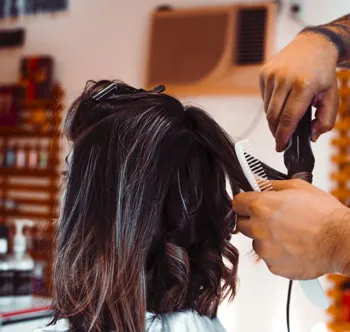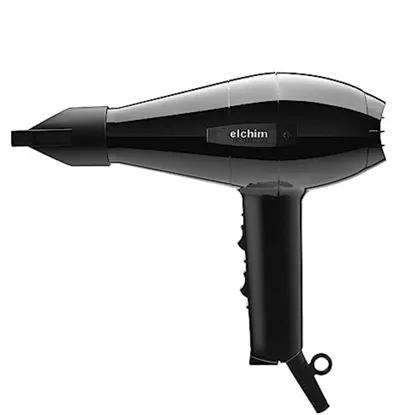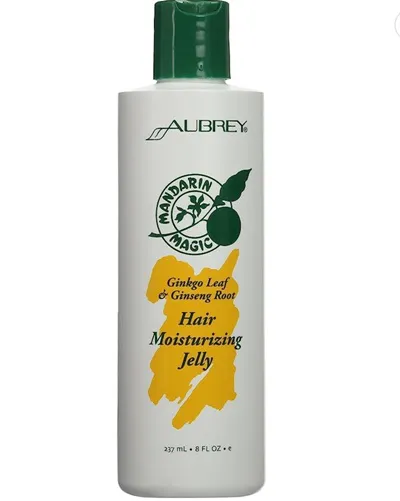 Forum Home
Forum Home
Methods Overview (Formerly Bridget)

This was formerly known as "Bridget Your Question is Here"
---------------------------------------------------------
Posted: January 07 2005 at 1:16pm Jenn_RR
---------------------------------------------------------
Hi Bridget,
Welcome to our site. I moved your question here because it really involves a variety of topics and needs to be explained in full (the thread you posted on was more addressing shrinks v. tubing specifically).
OK, now, your question was this:
Are shrinkies the tubes that hold the extensions?" I'm new to eurolocs and hairlocs, can anyone please tell me the difference?
There's so many options for extensions, I'm starting to get confused! I've had a sew in & a glue in before, and now I'm looking for a more long term fix. Any info is great, thanks so much!"
OK, let's start at the very beginning.
Extensions are very confusing. There are many of us here who have been doing this for awhile, and we still don't know what certain methods and techniques are called, but hopefully this will serve as a good overview. (I'm leaving out many details here for the sake of space, so ask as many follow-up questions as necessary.)
Extensionscan be defined as the process of adding hair to your existing hair to create length and/or volume. They can be either synthetic (manmade) or human hair (hair that is imported, primarily from Asia, and usually chemically treated to match different hair types).
Synthetic hair is generally categorized by its quality, the highest quality being monofibre (monofilment, such as Dome, Prostyles, PlastikHaar, Trimco, etc.).
Human hair categorization is more complex, so I wont delve into it here, except to say that some of the terms used to describe the different grades are Remy, Remi, virgin, single-drawn, double-drawn, "European," Indian, temple, Asian, cuticle, non-cuticle, and so forth.
Extensions can also be divided into clip-ins (hair that comes on toupee clips or similar attachments that are clipped into the roots of your own hair and taken out at night) or permanent (not, in fact, permanent at all, but will last in your hair for a few weeks up to three or four months and cannot be removed at night).
No extensions will last longer than three or four months, because (if for no other reason), when your hair grows, the extensions will be farther away from the scalp/roots, and will need to be moved back up.
Beyond that, when it comes to "permanent" extensions, there is a distinction between strand-by-stand (also known as individuals or interlocking), which means that a "strand" (actually a few hundred strands) of extensions hair is adjoined to small sections of your own hair, or wefts (in which hair is sewn on to a long strip of material resembling a grass skirt or curtain).
There are other basic distinctions, such as braids, dreads, and loose extensions.
These boards deal primarily in loose (free-flowing) extensions, so the following will apply to that type only. (If you're interested in dreads, braids, wool, or other alternative styles, Quinnster's is the best online source of information; you'll find the link below.)
Wefts can basically be attached to the hair via weaving, bonding, or microlinks. Strand-by-strand extensions can be attached in myriad ways, including various forms of weaving; pinchbraiding (also known as HairPolice method); Micro-Illusions, or Micro-Point Illusions; fusion (with glue, glue sticks, and glue guns, or prebonded hair--some fusion brand names include Great Lengths, Monkey Barz, Balmain, Cinderella, and so forth).
There is also the dome heat-sealing method, which can only be used with synthetic hair; it uses boxbraiding and a heat clamp to seal synthetic hair in on itself (this is quite complex to do, and usually requires two people to install).
Beyond that, there are loc-ing/linking methods (including microrings, extendtubes, and microlinks, which are available for home use, as well as Eurolocs and Hairlocs, which are done by those companies' "certified" extensionists); these are metal tubes (usually aluminum, nickel, or copper) that are clamped down on pretipped strands with your own hair to keep them in place.
And finally, there are shrinkies (also known as Shrink Links, which is the branded slaon version, and some people also use dual-wall shrink tubing for this); they are clear tubes that, when heated with a clamp/wand, "shrink" around pretipped extensions strands with your own hair to keep them in place.
As I mentioned before, there are products that fall into all of these categories that are available for DIY, or at-home, use, and others that are only available to licensed stylists.
Professionals, of course, can also use the DIY methods, but not the other way around. The branded methods are generally much more expensive. All of the salon versions are capitalized above; the DIY versions are lowercased.
Now, you specifically wanted to know the difference between Hairlocs and Eurolocs.
Both are quite similar, really--they are both loc/loc-ing strand-by-strand methods that cost anywhere between $1000 and $3000 for a full or 3/4 head.
Hairlocs have traditionally used a copper clamp (although it may not be copper now), but I think Eurolocs use a different type of metal.
On the plus side, these are fairly undectable and the installation and removal is fairly quick and painless. On the negative side, they are quite expensive, prone to slipping, and reported to cause a lot of damage (read the previous threads on these topics for more info).
The generic DIY equivalents, known as extendtubes, microrings, or microlinks, have received better reviews and are fairly inexpensive and easy to install.
Kristin provided a tutorial here, which shows how the process works step-by-step:
http://www.haircandy.net/microlink.htm
As far as shrinkies go, I explained them to some extent above, but they are a relatively new method (at least for at-home use) and are receiving pretty good reviews. They are arguably the most undetectable DIY method, and Amm has posted a lot of info about them on this site.
You can find a demo on Doc Locks, here:
http://www.drlocks.net/linkiesprebond/index.htm
Some other sites that may be useful are Quinnster's Loose overview:
Click Here To Go To Quinnster's
And the Hair Extensions Forum:
Click Here To Go To Hair Extensions Forum
Just read through the information, and take your time. Different people have different results with various methods, but doing a lot of research will help you find the best method for you.
Good luck!
Jenny
--------------------------------------------------------
Posted: January 07 2005 at 1:20pm | amm
---------------------------------------------------------
Wow. Jenny, you're awesome
---------------------------------------------------------
Posted: January 07 2005 at 1:29pm | Bridget
---------------------------------------------------------
WOW!! You are so great! thank you so much for taking the time to fill me in! I'm going to check out those sites you posted and check back in a few! Thanks again!!!
---------------------------------------------------------
Posted: January 07 2005 at 1:41pm Jenny_RR
---------------------------------------------------------
I'm glad if it's helpful. I've noticed a lot of new members stopping by in the past few days, and I thought it would be good if we could provide a thread especially for them--so perhaps it will be known as the "Bridget" thread from here on out.
It's just way to confusing to understand the extensions terminology (much less the actual processes being referred to) in the other threads without getting the basics down first. The fact that there are so many different names used to describe similar methods (and so many similar names describing totally different methods) doesn't help. Any first-timer trying to figure out what's right for them must be totally perplexed.
Maybe some of the other longtime members around here can review this thread and fill in any information I left out (or correct me if any of this info. is inaccurate or misleading). I wrote this rather quickly, so I'm sure I forgot a few important points. :)
---------------------------------------------------------
Posted: January 07 2005 at 5:19pm amymusic
---------------------------------------------------------
wow you are so informative. Thank you for your knowledge. Are the clip-in wefted hair extensions easy to put on? I don't like the ones you have to glue on, because its a pain to get out and it makes such a mess.
Do the clip-ins stay in or so they fall out easily when I brush my hair? Are they bumpy where they clip in?
---------------------------------------------------------
Posted: January 07 2005 at 7:17pm | Jenny_RR
---------------------------------------------------------
Well, I actually don't have much experience with clip-ins, so I'll let others jump in here.
That said, a lot of people really love clip-ins, and they're a good nondamaging and relatively inexpensive way to experiment. "Permanent" extensions are more expensive and a much greater commitment, so I think it's good to try the clip-ins first.
Whether they're bumpy or not would depend on the quality of the clips as well as your own hair. Generally, I think they're better suited to hair that's somewhat full than to thin, fine, pin-straight hair (which is why I've never really used them). There's an excellent thread that should answer some of your questions here:
4/3/05 - Please note that this link currently does not go directly to the topic but will be updated as soon as possible.
http://talk.hairboutique.com/forum/viewthread.asp?forum=AMB_ AP934431446&id=1683
Also, there's an application tutorial that will show you exactly how they're applied here (just click on the "application" button):
http://hisandher.com/store/shop_product.asp?main=MAIN_004&am p;su b=SUB_004&pro=7
Good luck!
---------------------------------------------------------
Posted: January 07 2005 at 8:12pm KristinSD
---------------------------------------------------------
Jenny- I wish that I had that thread about 10 days ago. I read through several- maybe 100 to learn everything you just said in your very informative mini-volume. Do you do books on tape? lol
amymusic- I got my rookie clip-ins a few days ago, and I realize that they are easy to clip on your hair, however blending it to supreme perfection can be very cumbersome. After a few attempts at installation, I am getting better at it each time. To answer your question- you can brush the hair like you would regular long hair-starting from the bottom and going up. But I hold the upper part of the hair so it will not tug at the hair comb and scalp. And yes, it is bumpy if you touch your head, but the average observer doesn't know (because for me- wavy hair, teased roots, and curling the natural hair to blend it all helps alot)
My goal is to deceive the onlooker...I don't want any doubletakes or pondering over the authenticity of my hair. So far so good. Good luck to you. It is a boatload of fun! I may opt for a more advanced method in the future. But for now this suits me just fine.
Hope that helps-from one rookie to another...
Where are all the clip-in vets?
---------------------------------------------------------
Posted: January 07 2005 at 10:20pm | Jenny_RR
---------------------------------------------------------
MetalGirl seems to know a lot about clip-ins, by the way. She gave a lot of info on styling them a few threads back:
http://talk.hairboutique.com/forum/forum_posts.asp?TID=29375 &KW=Metalgirl
---------------------------------------------------------
Posted: January 08 2005 at 4:50pm | sherrie215
---------------------------------------------------------
I just wanted to add to this thread. Ive done alot of bonded in wefts and have come up with some great tips to making them hold very well. Its not as permanent as some of the other methods. But its great for someone who just wants to try it out first or someone who's on a budget and cant afford the bigger investment that other methods require. And its SIMPLE and QUICK. It takes me about an hour to do a complete head, about 2 hours to do my own head.
You should be able to get 4 weeks wear out of my technique easily, I have some girls that get longer wear than that..consistantly.
Even some cheap hair, if you baby it will last 4 weeks. So for the cost of some liquid gold and a weft of hair its a pretty budget friendly and simple technique for an extension newbie to do.
Here is the link to my instructions!
http://p080.ezboard.com/fhair18356frm6.showMessage?topicID=1 076.topic
---------------------------------------------------------
Posted: January 08 2005 at 8:28pm | Bridget
---------------------------------------------------------
I've also learned that by spraying Pump it Up, or another sticky hair spray over the weft, and then using the hair dryer... adds a little more durability
*******************************************************
To visit the actual thread above:
Click Right Here To Go To Topic
"Are shrinkies the tubes that hold the extensions"[B/]









